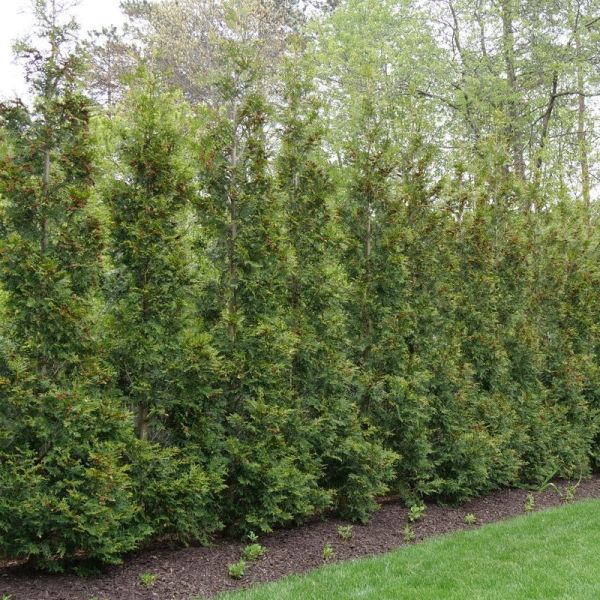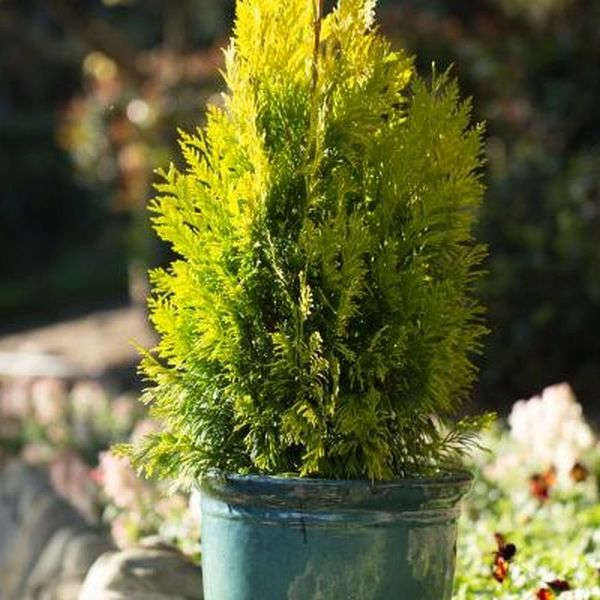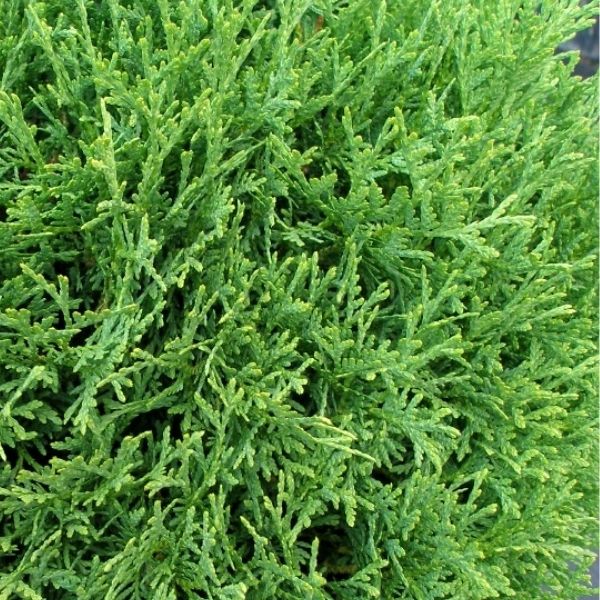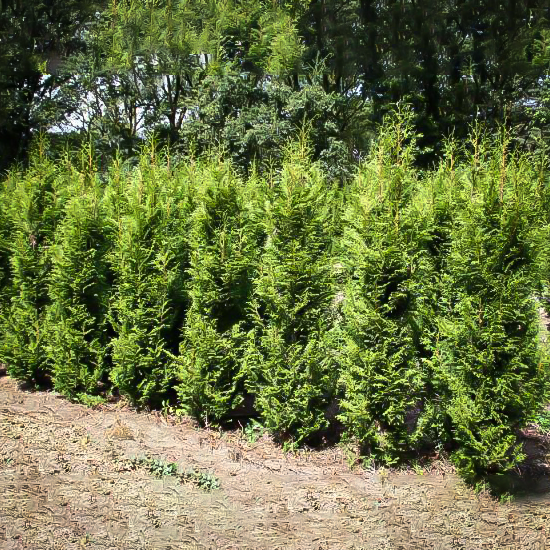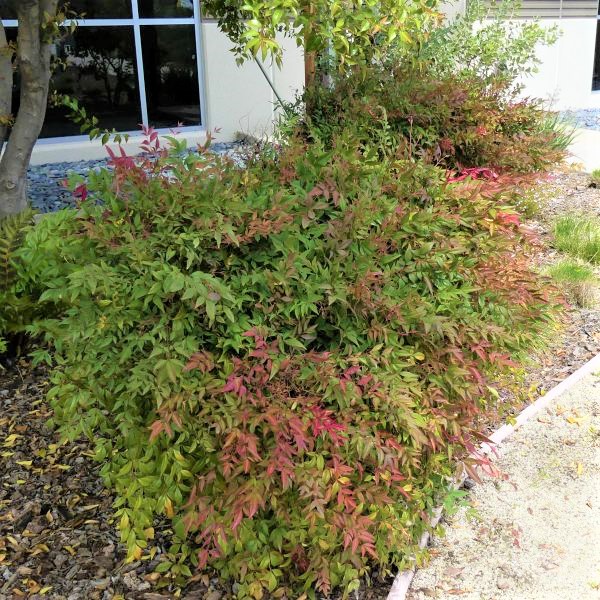





Dwarf Japanese Cedar
Cryptomeria japonica 'Globosa Nana'
19 reviews
Dwarf Japanese Cedar
Cryptomeria japonica 'Globosa Nana'
19 reviews
- 1 Gallon
- 2.5 Gallon
- 6 Gallon 1-2 Feet
We are sorry, product is currently out of stock due to seasonal availability. Please check the "Related plants available in your area" section below
Not just beautiful - intentionally selected by ShrubHub's 3D landscape design team to fit real-world spaces and maximize yard potential.
Why Dwarf Japanese Cedar?
The Dwarf Japanese Cedar, also known as Cryptomeria japonica 'Globosa Nana', is a popular ornamental plant in landscaping due to its unique and attractive rounded shape. It is a slow-growing evergreen conifer that is typically used as a low-maintenance accent plant in small gardens or as a container plant. This plant is also prized for its ability to withstand harsh weather conditions and can be easily pruned to maintain its compact size.
Related plants available in your area
Sunlight
Dwarf Japanese Cedars require full sun to partial shade, preferably receiving at least 4-6 hours of direct sunlight each day.
Watering
Dwarf Japanese Cedar requires regular watering to keep the soil evenly moist, especially during periods of drought. It is important not to let the soil dry out completely, as this can stress the plant and negatively affect its health.
Fertilizing
Dwarf Japanese Cedars require a balanced slow-release or organic fertilizer with equal amounts of nitrogen, phosphorus, and potassium. Avoid using high-nitrogen fertilizers as they can promote excessive growth.
The Dwarf Japanese Cedar is a slow-growing and compact evergreen tree that is prized for its unique texture, bright green foliage, and easy-to-grow nature. This cultivar is a great choice for adding year-round interest to the landscape, and it is ideal for small gardens and containers.
The Dwarf Japanese Cedar is a slow-growing and compact evergreen tree that is prized for its unique texture, bright green foliage, and easy-to-grow nature. This cultivar is a great choice for adding year-round interest to the landscape, and it is ideal for small gardens and containers.
Dwarf Japanese Cedar is adaptable to a wide range of growing conditions, including full sun to partial shade and a variety of soil types. They prefer well-drained soil that is rich in organic matter, and they benefit from regular fertilization to promote healthy growth.
This tree is a small and compact cultivar that typically reaches heights of up to 3-5 feet tall and 2-3 feet wide. It has a unique, mounding shape that makes it a great choice for adding texture and interest to the garden.
Dwarf Japanese Cedar has attractive, bright green foliage that provides a striking contrast to other plants in the garden. The foliage is arranged in a unique, scale-like pattern along the stems, giving the tree a full and lush appearance.
The Dwarf Japanese Cedar's evergreen nature not only makes it a sight to behold in the summer, but also in the winter. Its glossy green leaves remain throughout the winter, giving your garden year-round vibrancy.
When properly placed, a Dwarf Japanese Cedar instantly becomes the focal point of any garden. They give year-round interest and texture to the landscape and are simple to maintain and adaptable to a variety of growth environments. The fact that they grow slowly makes them great for contained environments.
Plant Information:
| Botanical Name: | Cryptomeria japonica 'Globosa Nana' |
| USDA Zones: | 5 - 9 |
| Water: | Moderate |
| Exposure: | Full Sun |
| Soil Needs: | Well-Drained |
| Mature Height: | 4 - 8 feet |
| Mature Spread: | 4 - 5 feet |






Pollination Info
Pollination of the Dwarf Japanese Cedar (Cryptomeria japonica 'Globosa Nana') occurs through wind dispersal. The plant produces cones which contain both male and female reproductive structures. The male structures release pollen into the air, which is then carried by the wind to the female structures on other plants.
It is important for the Dwarf Japanese Cedar to have male and female plants in close proximity to ensure successful pollination. Cross-pollination between two different plants is also beneficial for genetic diversity and the production of viable seeds.
The Dwarf Japanese Cedar is not dependent on insect pollinators, making it a low-maintenance plant in terms of pollination.
Overall, the Dwarf Japanese Cedar is a hardy tree that requires little attention to pollination, as it primarily relies on wind dispersal.
FAQ
Frequently Asked Questions about Dwarf Japanese Cedar (Cryptomeria japonica 'Globosa Nana')
What is a Dwarf Japanese Cedar?
A Dwarf Japanese Cedar, also known as Cryptomeria japonica 'Globosa Nana', is a slow-growing, low-maintenance evergreen tree that typically grows up to 6 feet tall and wide with a conical shape. It is also commonly referred to as a Globe Japanese Cedar due to its spherical shape.
What are the ideal growing conditions for a Dwarf Japanese Cedar?
These trees typically grow best in full sun or partial shade and well-drained soil. They also prefer a slightly acidic soil with a pH range of 5.5 to 6.5. Avoid planting in areas with excessive moisture or standing water.
How often should a Dwarf Japanese Cedar be watered?
Dwarf Japanese Cedars do not require frequent watering and are actually quite drought-tolerant once established. However, it is important to ensure the soil is moist but not waterlogged during the growing season.
When is the best time to prune a Dwarf Japanese Cedar?
The best time to prune a Dwarf Japanese Cedar is in early spring before new growth appears. It is important to not remove more than one-third of the tree's foliage at one time. It is also recommended to not prune beyond the green foliage as this will not regrow.
How fast does a Dwarf Japanese Cedar grow?
Dwarf Japanese Cedars are slow-growing trees, typically growing 3 to 6 inches per year depending on growing conditions. However, they can live up to 50 years or more with proper care.
Can a Dwarf Japanese Cedar be grown in a container?
Yes, Dwarf Japanese Cedars can be grown successfully in containers. It is important to ensure the container has drainage holes and the soil is well-draining. It is also recommended to fertilize the tree twice a year with a slow-release fertilizer specifically designed for container plants.
What are the common pests and diseases that affect Dwarf Japanese Cedars?
The most common pests that affect Dwarf Japanese Cedars are spider mites and scale insects. These can be treated with insecticidal soap or horticultural oil. The most common diseases are root rot and cedar apple rust, which can be prevented by providing proper soil drainage and avoiding planting near susceptible apple trees.
Are Dwarf Japanese Cedars deer-resistant?
Yes, Dwarf Japanese Cedars are typically considered deer-resistant due to their prickly foliage. However, if food is scarce, deer may still browse on the tree.
Planting & Care
Planting Instructions for Dwarf Japanese Cedar:
- Choose a location with well-draining soil and partial shade.
- Dig a hole twice the size of the container the plant came in.
- Gently remove the plant from the container and loosen the roots.
- Place the plant in the hole and backfill with soil, tamping down gently as you go.
- Water thoroughly after planting.
Care Instructions for Dwarf Japanese Cedar:
- Water regularly, keeping the soil consistently moist but not waterlogged.
- Fertilize in the spring with a slow-release, balanced fertilizer.
- Prune in early summer to maintain shape and size.
- Protect from harsh winter winds and heavy snowfall.
- Monitor for pest and disease problems, treating promptly if necessary.
Check Out These Verified Customer Reviews:
Customer Reviews
4.6 out of 5 based on 19 reviews
Thank you! Your review has been submitted.
The Dwarf Japanese Cedar was well-packaged and arrived quickly. Very satisfied with the shipment experience.
The Dwarf Japanese Cedar is nice, but there were a few damaged leaves upon arrival. Still a beautiful plant overall.
Beautiful and healthy plant, arrived in excellent condition.
Item has been added to your cart.



